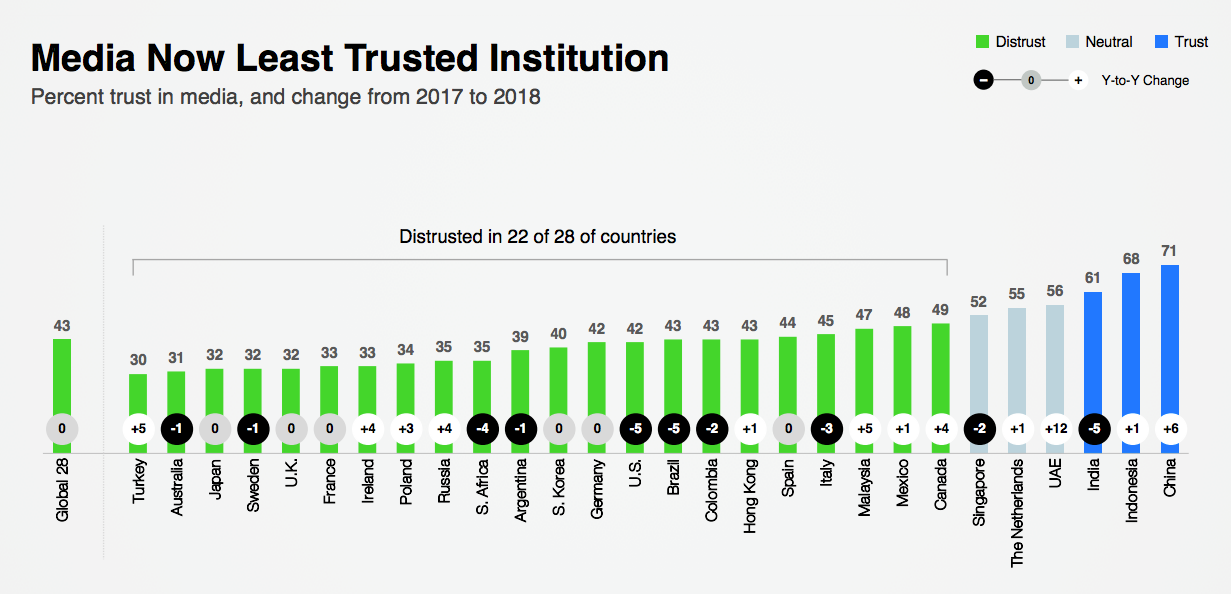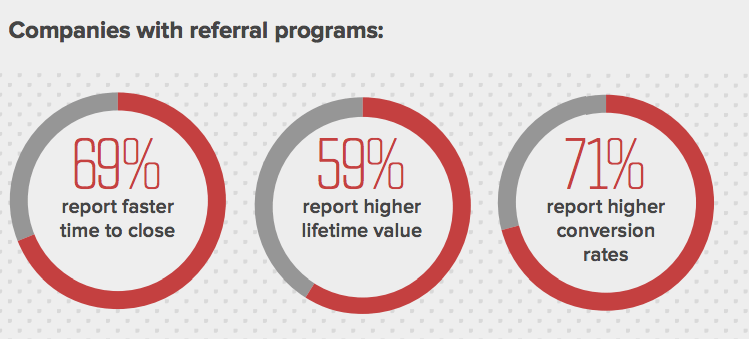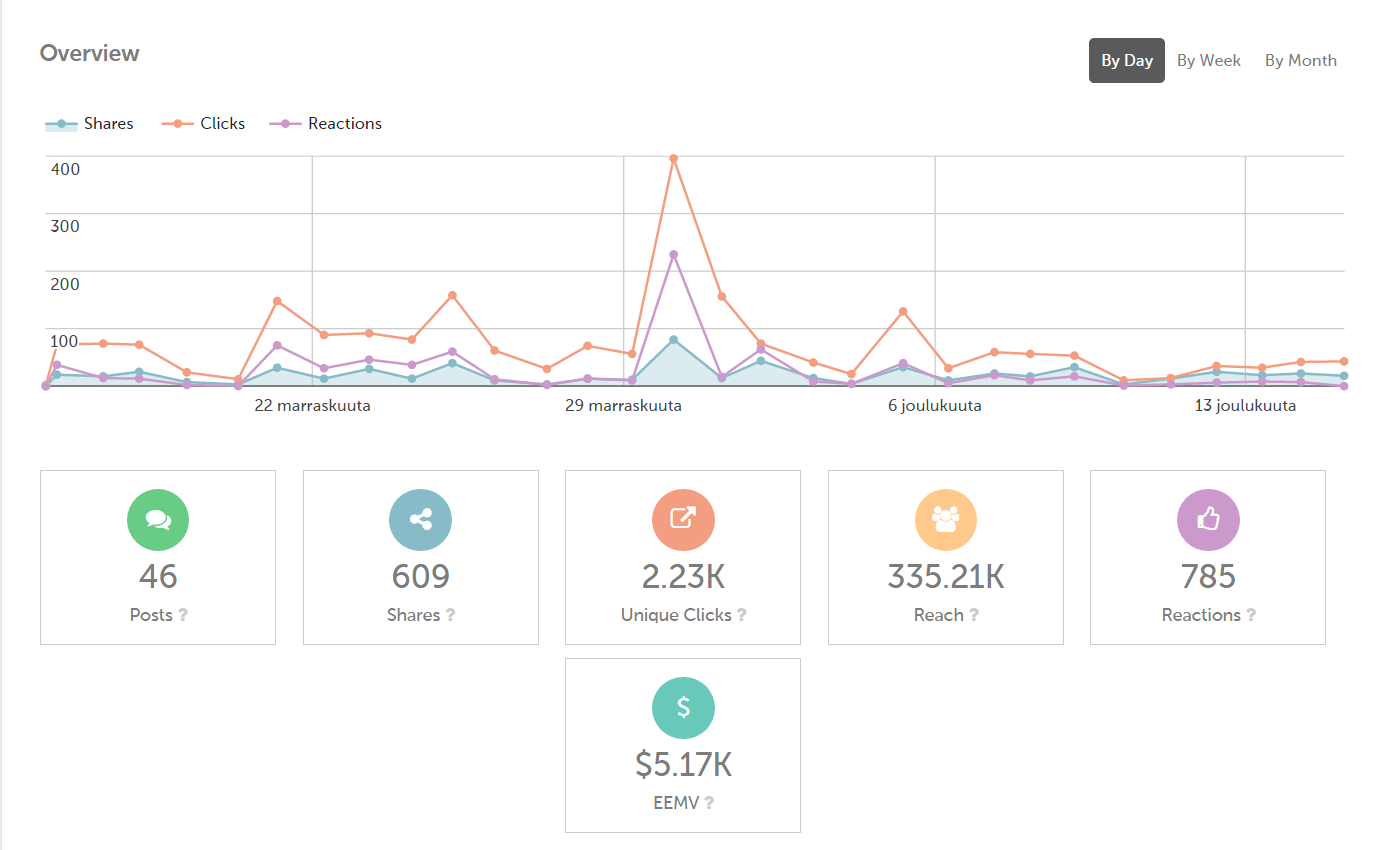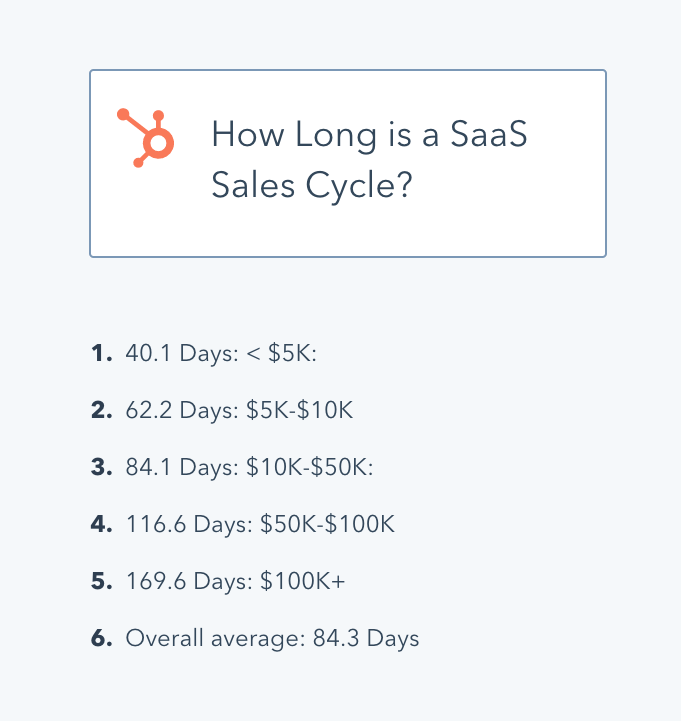
It’s no secret that the field of marketing is constantly evolving, and SaaS brands are not immune from the challenges that arise due to the fast-paced nature of the field. One great way SaaS companies can keep up is through brand advocacy.
2021 SaaS Trends that Affect Brand Advocacy
For starters, consider the overwhelming push toward personalization.
According to a Forbes article, 71% of consumers “feel frustrated when a shopping experience is impersonal.” 74% are displeased with websites that aren’t personalized.
This signals the need for SaaS brands to segment their content assets and interfaces to hone in on messages that speak directly to specific customers. Personalization will continue to be expected in the years to come, and brands will have to figure out how to deliver it.
In the SaaS industry, where every interaction is ideally tracked, the opportunities for personalization are enormous.
Changes to Facebook’s algorithm a few years ago have also caused organic reach for pages to remain in decline, though you may still be able to find some success in organic if you get creative.

There’s also the rise of automation to think about.
New and existing SaaS companies are investing heavily in AI and machine learning to reduce churn and win more new customers simultaneously. From services that provide A/B testing to conversational bots that capture leads on-site, brands are rapidly experimenting with new ways to optimize their content.
Why Brand Advocacy is Such a Big Deal for SaaS
Simply put, your content marketing strategy is at the core of your capacity to adapt as a SaaS brand. Beyond the basic benefits of driving traffic and raising brand awareness, an effective content strategy is essential to consistently nurture and onboard leads.
Conventional wisdom says that we should shell out piles of money for paid media or sponsoring influencer posts to grab people’s attention. However, is this sort of “pay-to-play” strategy really the best way to go?
In an era where social proof is such a powerful currency for marketers, it’s more important than ever for SaaS marketers to seek out brand advocates wherever they possibly can.
Who could possibly be better brand advocates than your own customers and employees? These people are already emotionally invested in your product’s success, and they know your brand better than anyone else.
Encouraging your own network to promote your content and product from their personal social accounts is a potential game-changer for SaaS brands. Rather than spend the resources to chase paid outlets and influencers, brands should focus on advocacy, which can produce better results in a shorter amount of time.
“By creating a product that solved a problem that a lot of people faced, it meant there were already millions of people looking for us when we launched,” Canva CEO Melanie Perkins told Forbes, “so when they found us, they told their colleagues, friends and families.”
Here are some of the biggest benefits associated with brand advocacy, along with some ways that SaaS marketers can get started with realizing them.
1. Overcome Content Overload
In an era where people are on their phones nearly 4 hours or more per day, your customers obviously have a lot to sift through.

While the concept of “quality content” might be cliché at this point, consider how a higher volume of shares highlights a piece of content as buzzworthy. This is social proof at its best.
Content shares and product recommendations work because people trust peers and thought leaders more than they trust brands and institutions.

Bear in mind that employees who serve as active advocates on social media can quickly emerge as influencers on your behalf. Indeed, transforming your own employees into thought leaders is a desirable byproduct of brand advocacy.
2. Expand Your Organic Reach through Brand Advocacy
No matter how you slice it, competition in the SaaS space is fierce.
Considering that there are approximately 8,000 brands in the martech space alone, SaaS companies must fight tooth and nail for the attention of potential customers.
Think of advocacy as a sort of numbers game. The more people promoting your content, paid or otherwise, the more likely you are to break through the noise and reach the people who need your product most.
When you encourage employees to regularly promote your content with their own social media audiences, you essentially amass a small army of promoters you can call on time and time again. Through social brand advocacy, you exponentially increase your social reach and potential to be seen by leads.
Keep in mind – in many cases, all it takes is for the right person to see a link and opt-in for a free trial to pave the way to the sale.
TOPO CEO Scott Albro notes that the smaller the company your prospect works for, the more likely he or she will be to stick with your product once the trial period expires:
“SaaS buyers won’t engage in more than one trial. Our data shows that this is particularly true in the small and medium size business market where buyers tend to comparison-shop less. You need to make sure that buyers find your trial first. You also need to make sure that you don’t squander that opportunity when you get it.”
3. Engage Your Employees to Help Grow Brand Awareness
Perhaps one of the most overlooked aspects of encouraging brand advocates among employees is the actual task of asking them to do so.
While most workers would be glad to promote your content, keep in mind that brands should treat advocacy like any other sort of campaign. That means having a defined strategy and measuring performance.
However, SaaS teams often have highly specialized skill sets. You can’t expect everyone to be a seasoned content marketer and social seller, too.
Instead of having employees post content haphazardly, consider some of the tools out there that help streamline the process of internal brand advocacy. You can also help them with the content of their post.
One such tool is Smarp, which aggregates company news and industry-relevant content to categorized feeds. Team members can pick up the content that speaks to them most and schedule posts for their own profiles with just a few clicks.
This cuts down on potential wastes of time on social media and streamlines the process of sharing new content amongst your workers.

Features such as gamification signal the most active advocates within any given company, providing additional incentives for employees to become eager advocates. In addition to content aggregation, Smarp provides analytics on both a company-wide and personal level to identify top advocates.
This type of system works because it makes employees from all departments into partners in your SaaS product’s exponential sales growth success, a process which Roketto Co-founder Ulf Lonegren compares to the growth of a tree that spawns more trees:
“Make your employees proud of the work they do, make them feel like an important part of the process by reminding them how the software provides value and informing them of the successes, listen to their ideas, and provide a sales chart in the engine room that tracks the progress. Set sales goals and provide rewards for reaching those goals. Provide incentives for team members to make sales. In this world of mass marketing, word of mouth often provides the authenticity that buyers want when seeking a product, so remember that every member of your team could be that one oak tree, and from one tree many nuts can fall.”
4. Supercharge Your Social Selling
SaaS customers are heavily influenced by what they see on social media when it comes time to make purchases.
This rings true in terms of how often they see content and the sharers of that content. If social posts from sales pros, marketers, and brands themselves are deemed less worthy of people’s attention than social posts from peers and laymen, then your prospects are more likely to respond favorably to content shared by a high volume of people.
Research from Sana, published in 2018, indicates that social media is the number two driver of digital sales in the B2B sector, ranking just behind onsite buying. This is how the brand advocacy strategy can really boost your sales. The more people who share your content across social channels, the more customers you attract to your business.
According to LinkedIn, 87% of social customers have a favorable view of products that were introduced to them through their own network. By promoting products via employees, you have access to personal networks that you might not otherwise reach exclusively through a brand channel.
Last year, B2B buyers looked at 13 content pieces before selecting a vendor. Similarly, 61% of customers have made a purchase based on a recommendation from a blog.
A greater number of brand advocates translates into more brand equity in the minds of potential customers, which makes it easier for sales reps to build relationships on social channels and to close more deals in shorter sales cycles.
This is fortunate, as sales cycles need as much shortening as they can get, in order to remain scalable. The Bridge Group’s Matt Bertuzzi notes that the total contract value for a SaaS conversion correlates with the number of days it takes sales reps to seal the deal. According to his firm’s data, B2B SaaS sales cycles can last anywhere from five weeks to five months.

Dennis Koutoudis from LinkedIn SuperPowers told SalesHacker that he sees prospecting on social media, especially on LinkedIn, being the key SaaS sales opportunities:
“I predict that the usage of LinkedIn Sales Navigator by Sales Teams will increase considerably, enabling them both to zero in on their target prospects with extreme precision and also to delve deeper into Social Selling. The key here is to focus on providing value, build trust and develop solid professional relationships with target prospects that will ultimately improve sales figures. Great emphasis will also be placed on the way we present ourselves as Sales Professionals on the LinkedIn platform since with such fierce competition, now more than ever, we need to not only stand out in our professional field but also to engage in actions that will significantly increase our visibility on the LinkedIn platform.”
Prospecting platforms are major game-changers in this regard. Social selling teams can use them to scale operations, thanks to smart libraries of content assets that reps can append to posts on the fly, as well as sophisticated contact intelligence data that can be used for qualifying leads mid-discussion and enriching CRM entries.
5. Keep Your Content Budget Under Control
According to the Content Marketing Institute, 46% of brands spent less than $1000,000 on digital marketing budget in 2020. Given the emphasis on automation and other tools that could potentially cut into any given SaaS company’s budget, a leaner content marketing strategy just plain makes sense.
When your employees and customers are doing the legwork of promoting your brand, you cut out any sort of middleman when it comes to promotion. While there might be a time and place for paid media or influencers, SaaS brands should focus on an organic promotion strategy that keeps costs down.
Encouraging brand advocacy costs next to nothing compared to paid media. Additionally, popping up more and more via social media could actually score you earned media mentions as an added bonus.
Rather than paying for promotion and distribution, creating your own advocates represents a more financially sensible strategy.
Conclusion
As competition continues to emerge in the SaaS space, having voices on deck to promote your content becomes a critical piece of standing out from the crowd.
Not only does advocacy keep content marketing costs down, but allows SaaS brands to seamlessly signal their authority. Rather than pay for that same credibility, why not generate it yourself?
While marketing strategies at large never stay the same for long, brand advocacy is here to stay. If you want help growing your brand awareness or with any other content marketing needs, let us know!
The post Why SaaS Brand Advocacy is More Important than Ever in 2021 appeared first on Neil Patel.
from Blog – Neil Patel https://ift.tt/3rh3GhO

No comments:
Post a Comment